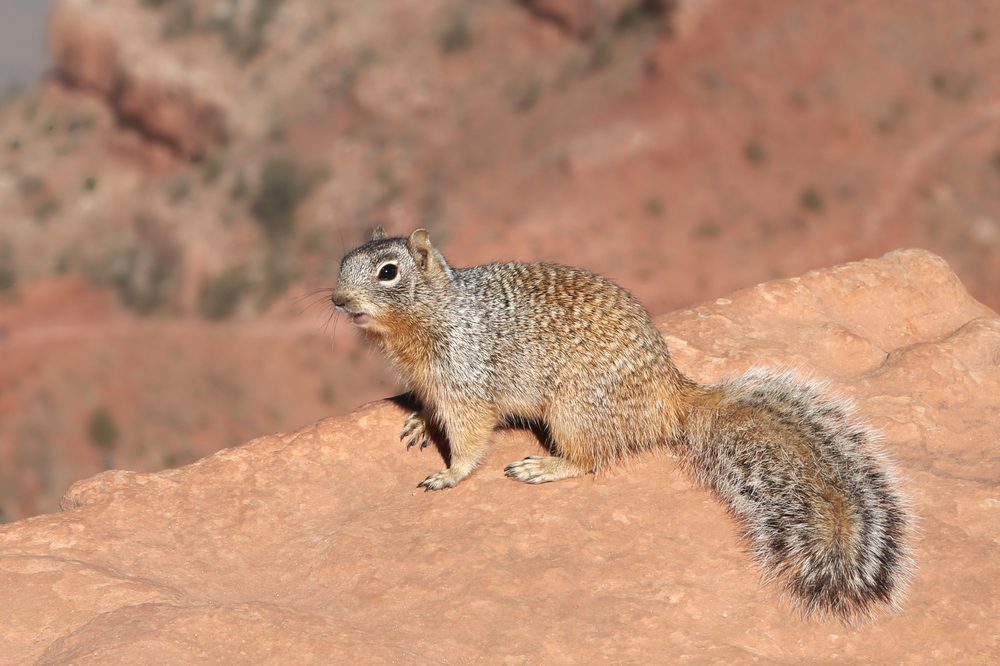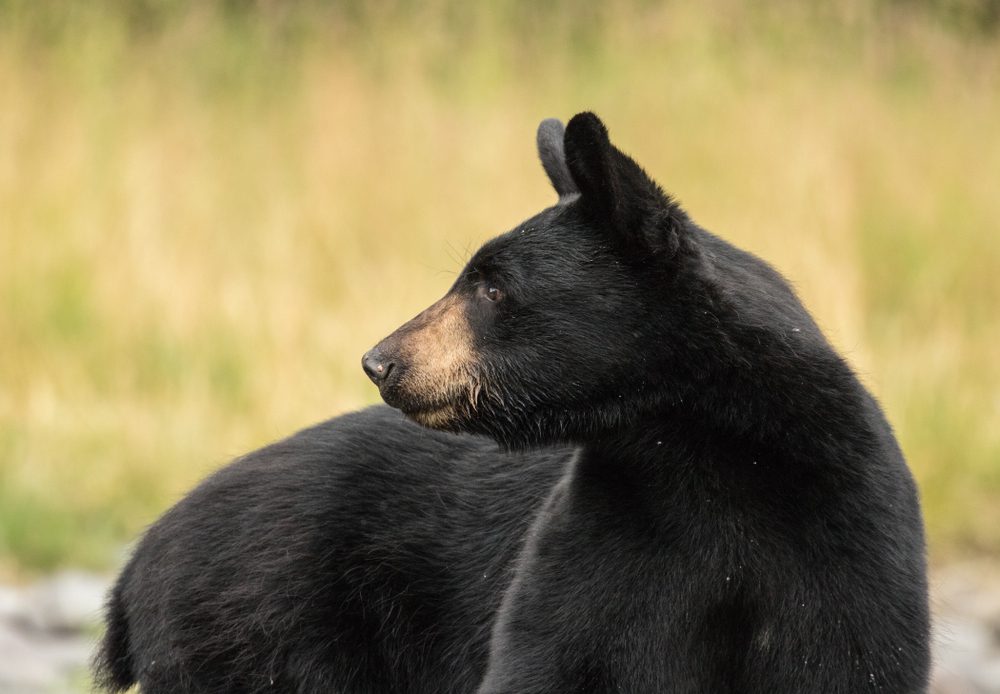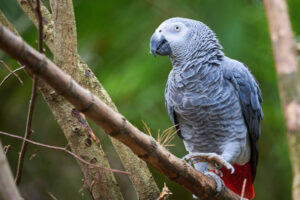Are you about to visit the Grand Canyon National Park? Or maybe you’re just interested in reading more about this breathtaking place included in the list of the seven natural wonders of the world. I’m absolutely sure you’ve at least heard about the stunning beauty of the Grand Canyon.
But did you know the area is populated by some potentially dangerous animals? As someone who has visited the Grand Canyon several times as well as other popular national parks, I’m here to tell you about which creatures you should avoid to make sure you’re not putting your life in danger.
If you’re curious about the deadliest animals in the Grand Canyon, this article is for you! It’s worth mentioning that, other than spot No. 1, the animals in the Grand Canyon on this list aren’t in any particular order in terms of danger.
Check this out!

1. Rock Squirrels
I’m pretty sure you didn’t expect to see this seemingly lovely animal on a list like this, but let me tell you that not only are rock squirrels some pretty dangerous animals, but they are actually the most dangerous creatures you’ll ever find while visiting the Grand Canyon.
You will often see them scurrying around the rocky terrain—that’s where they got their name from. These squirrels are usually active during the day, and they eat both plants and other animals such as lizards and birds.
While it may look harmless and cute, this small mammal has been known to bite and attack humans, especially if it feels threatened. While experts aren’t entirely sure why rock squirrels tend to have this aggressive behavior, they say it’s probably due to a combination of factors.
One reason would be that they have somehow become familiar with people feeding them, making them less afraid of humans. However, these small animals may feel threatened if a person gets too close or tries to touch them.
So, if you encounter a rock squirrel while exploring the Grand Canyon, remember to keep a safe distance and avoid approaching it. And most importantly, don’t try to feed it. If you do so, the squirrels will likely feel threatened, which may make them lunge at or bite you. Their bites can be very dangerous because they can transmit diseases like rabies.
2. Mountain Lions
Mountain lions, also known as panthers, pumas, or cougars, are large predatory felines found throughout much of North America. While it’s pretty rare to see one in the Grand Canyon, these large felines live in the area and can be very dangerous if provoked.
Mountain lions are solitary animals that tend to be more active in the early hours of the morning and late afternoon. They usually hunt deer but also prey on smaller animals like rabbits.
While visiting the Grand Canyon, avoid hiking alone and keep small children close. If you do encounter a mountain lion, remember to stay calm and don’t run, as this may trigger its instinct to chase.
If a mountain lion walks towards you, make yourself appear larger by standing on your toes and raising your arms. Make noise to scare the animal away, but make no direct eye contact under any circumstances, as this can be interpreted as a treat.
3. Bison
Bison are the largest land mammals in the country and can weigh over 2,000 pounds. These animals are known for their strengths, touchy temperament, and massive size. Of course, they are also known for being a beloved symbol of the American West. It’s essential to give them plenty of space and treat them with respect.
While they may seem docile at first, bison can be quite unpredictable and dangerous if threatened. When provoked, bison can charge at up to 35 miles per hour. They also have huge horns that they use to defend themselves. In other words, you really wouldn’t want to provoke a massive animal like this.

4. Elk
Elk, also known as wapiti, are a large species within the deer family and one of the most dangerous animals you can encounter in the Grand Canyon. While they are usually not hostile to humans, they will show you their aggressive side if they feel threatened or see you as a potential enemy.
During the fall mating seasons, elk can become pretty aggressive as they compete for mates. They may attack people who get too close, and their big antlers can cause severe injuries. It’s important to recognize the signs of an aggressive elk.
It will usually flare its nostrils, paw the ground, or lower its head. If you see any of those signs, it’s vital to avoid further confrontation and move away quickly.
The bottom line here? Give elk plenty of space and avoid approaching them. Better safe than sorry.
5. Coyotes
It’s common to see a coyote while visiting the Grand Canyon. Actually, these canines are common almost anywhere in North America. They are typically small to medium-sized animals, and you can recognize them by their pointy ears and bushy tails. They are sometimes mistaken for foxes or wolves.
Coyotes are naturally curious, which is why they can often be seen approaching humans. While they do this out of curiosity, remember that they are wild animals, so don’t get fooled.
Coyotes aren’t as aggressive as other animals on this list, and they would rather run if they sensed any danger. However, they can become defensive if you invade their territory.
Moreover, they are opportunistic hunters and scavengers and can become pretty aggressive if they associate people with a source of food. If this happens, the coyote can become too comfortable around humans and lose its fear. This usually leads to a dangerous situation.
If a coyote comes nearby while you’re exploring the Grand Canyon, make loud noises and make yourself look as large as possible to scare it away.
6. Javelina
Javelina, sometimes known as collared peccaries, are often confused with pigs but are actually a species of wild pig-like ungulate native to South, North, and Central America.
They usually weigh between 30 and 60 pounds and are typically about 2-3 feet long. They are social animals, traveling in groups of up to 20 individuals.
Javelina are most active at dusk and dawn and spend the hottest hours of the day resting in the shade. While these animals aren’t normally aggressive toward people, they can become defensive if cornered or threatened.
To avoid encountering javelina, it’s important to watch them from a safe distance and respect their space. If by any chance you find yourself dangerously close to a javelina, avoid loud noises and sudden movements that may startle the animal.
Red flags include baring its teeth, making low growling sounds, or bristling its hair.
7. Rattlesnakes
The rattlesnake is one of the most feared and well-known animals in the Grand Canyon. When rattlesnakes feel threatened, they use the rattle at the tip of their tails to make a warning sound, hence where they get their name from.
There are several different species of rattlesnakes in the Grand Canyon, including the speckled rattlesnake, the prairie rattlesnake, and the western diamondback. These dangerous snakes are usually active during the warmer months and can typically be found in various habitats, from grasslands to rocky areas and forests.
While rattlesnake bites are rarely deadly, they are still dangerous, so knowing how to reduce your risk of encountering a rattlesnake is crucial.
One way to avoid getting close to them is to not leave the established trails and stay away from spots with tall grass or other dangerous areas where snakes may be hiding. You should also opt for closed-toe shoes and long pants when visiting the Grand Canyon to protect yourself from potential bites.
But what do you do if you hear the rattle of a rattlesnake’s tail? Make sure you move away calmly and slowly. And if you happen to get bitten, get medical help right away.

8. Black Bears
Black bears are one of the most beloved and iconic animals in the country. In spite of that, they are actually one of the most dangerous animals you can find in the Grand Canyon. They are usually found in forests, but they can also live in various habitats, including swamps, mountains, and deserts.
In the Grand Canyon area, these animals inhabit the wilderness areas and forests surrounding the canyon, especially in the park’s northern region. They are omnivorous and opportunistic feeders. That’s why black bears can often be seen scavenging for food in campgrounds and other places where humans are present.
These situations can lead to conflicts between bears and people, particularly if the animal loses its natural fear of people and becomes habituated to human food.
If you encounter a black bear, stay calm and avoid sudden movements. The next thing you should do is slowly back away while facing the animal. Don’t run away or try to climb a tree. Black bears are pretty good at climbing trees, so they can easily follow you if you do that.
Also, it’s always best to carry bear spray if you’re going on a hike in the Grand Canyon.
9. Tarantula Hawks (Wasp)
Tarantula hawks are large, colorful wasps that use tarantulas as hosts for their offspring. Basically, female tarantula hawks are the ones who hunt down tarantulas to paralyze them with a nasty sting. Once they do that, they lay eggs on those bodies. Each larva hatches and feeds on the paralyzed tarantula until it is fully grown.
And before you ask, no, the tarantula hawk’s sting isn’t lethal to humans. In spite of that, experts say it’s one of the most painful insect stings. The pain has been described as comparable to the shock from an electric fence and can last somewhere between several minutes and several hours. Some people say the pain is similar to when you’re struck by lightning. In other words, you may want to stay away from these dangerous wasps.
If you encounter one during your trip to the Grand Canyon, avoid disturbing or touching them. They will not sting and aren’t aggressive unless provoked.
You may also want to read Can You Believe People Keep These 7 Weird Animals as Pets?!












